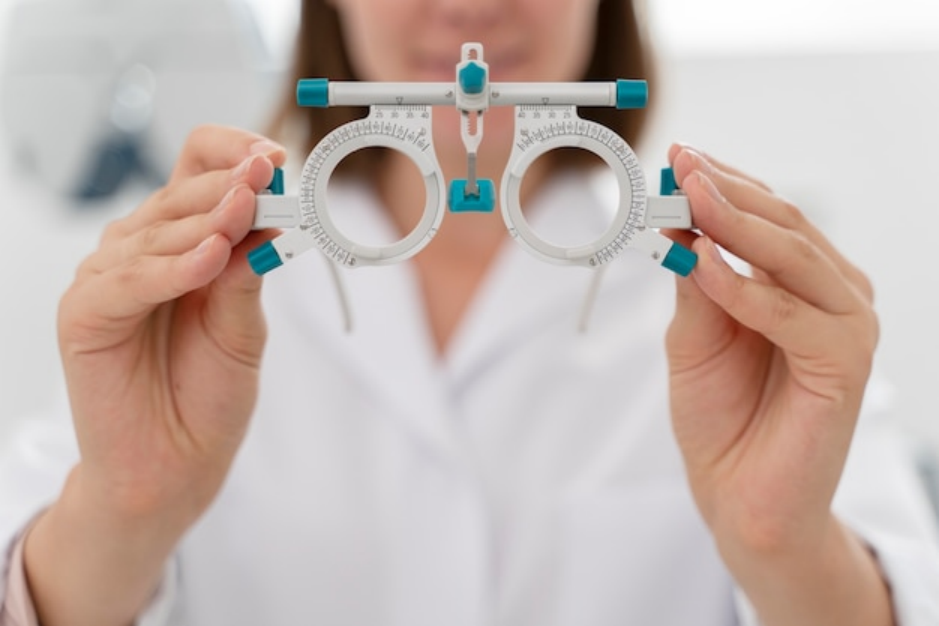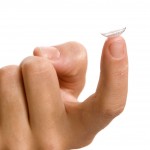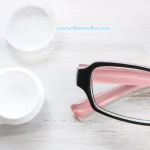How To Read Contact Prescription?

Do you plan on shopping for your glasses or contact lens?
You need to enter your prescription details when prompted. But then comes the question: how can you read your contact lens prescription?
Both contact lens and glasses prescriptions come with numbers and symbols that may look confusing initially but are easy to understand if you know what they are.
Fortunately, that’s what this guide is about.
We’ll show you how to read your contact lens prescription and understand the difference between contacts and glasses. So, let’s get on with it.
What is Contact Lens Prescription?
A contact lens prescription is a specialized document that provides detailed information necessary for selecting the appropriate contact lenses for a patient’s eyes. Unlike a glasses prescription, it requires specific measurements that pertain to the contact lens fit.
What Does a Contact Lens Prescription Look Like?
Example prescription:
| Eye | Base Curve | Diameter | Power/Sphere | Cylinder | Axis | Addition | Dominant |
|---|---|---|---|---|---|---|---|
| Left | 8.6 | 14.2 | -2.75 | -0.75 | 180 | +2.0 | N |
| Right | 8.8 | 14.1 | -1.75 | -0.50 | 160 | +1.5 | D |
Contact lens prescriptions look different depending on the need for vision correction, the contact lens brand, and the eye doctor.
However, most contact lens prescriptions follow the same pattern with the following things in place:
The Visual Correction Parameters: These are the things that will be examined by the doctor, and it varies from prescription to prescription. Nonetheless, all prescriptions have rows for the right and left eye and a ‘lens power’ column.
The Readings: These are the numbers you would see on the prescription. Note that the numbers for glasses cannot be used for contact lenses and vice versa. The same is for different types of glasses or lenses. The numbers for clip-on glasses differ from that of multifocal or polarized lenses.
Expiration date: Contact lens prescriptions are valid for one to two years, depending on the regulations in your state. Therefore, you’ll need to obtain a new prescription once your old one has run out. Although getting the right prescription for your contact lenses may seem like a hassle, it is ideal for your eye health.
Aside from these three things, the contact prescription will also contain some personal information about you, the eye doctor, and the contact lens brand.
Personal information:
An eye health prescription will have a space for your name, the doctor’s signature, and the brand’s name.
Sometimes, the brand name appears on the top right corner of the prescription, while your name and the doctor’s signature are written below.
Notwithstanding, these are the basic things you should find in contact lenses or eyeglass prescriptions.
Reading your contact lens prescription

Into the order of the day: how to read contacts and glasses prescriptions. So what can you find on your lens and glasses prescription?
Contact Lens prescription information:
| Term | Meaning | Details |
|---|---|---|
| OD | Ocular Dexter | Right eye |
| OS | Ocular Sinister | Left eye |
| OU | Ocular Uterque | Visual correction needed in both eyes |
| BC | Base Curve | Measures back curvature of lens; tailored to cornea’s curve |
| DIA | Diameter | Distance from one edge of lens to the other |
| SPH | Sphere | Strength of prescription; negative for nearsightedness, positive for farsightedness |
| COLOR | Color | Prescription information for colored or blue light glasses |
| ADD | Addition | Additional lens power for multifocal, bifocal, etc.; usually between +0.75 and +3.00 |
| PRISM | Prism | Parameter for eye alignment; includes BO, BU, BI, BD indicators |
| SVD | Single Vision Distance | Condition needing single vision or distance glasses |
| SVN | Single Vision Near | Prescriptions to correct nearsighted vision; a type of single-vision prescription |
OD: “Ocular dexter,” meaning “right eye.”
OS: “Ocular sinister,” meaning “left eye.”
OU: “Ocular uterque,” which means a visual correction is needed in both eyes.
BC: “Base curve,” which measures the back curvature of your glasses or contact lens shape in millimeters. Note that both the base curve (BC) of your left and right eye would differ. It will be a prescription tailored to the cornea’s curve of one or both eyes for the best fit.
DIA: “Diameter,” which is the distance from one edge of your lens to the other.
SPH: “Sphere,” which refers to the strength of your contact lens prescription, that is, how much vision correction you need to reach a clear and sharp vision. (Some contact lens brands refer to this as “PWR.”) SPH is best for addressing nearsighted or farsighted vision correction. A negative number means myopia (nearsightedness), and positive means hyperopia (farsightedness).
COLOR: You’ll notice this on your prescription if you’re getting lenses that modify or enhance the color of your lens. For instance, Clearly’s blue light glasses or other blue-violet light-emitted glasses would have this contact prescription information added.
ADD: This is the additional lens power prescribed for multifocal, bifocal, reading, and progressive lenses. Both of your eyes will most likely have the same value, which typically falls between +0.75 and +3.00.
PRISM: This parameter is essential for eyewear prescriptions when aiding eye alignment. Four indicators (BO, BU, BI, and BD) reveal details about the prism’s thickest edge or base orientation. Use this reading for brands that offer prism prescription glasses.
SVD: Have you ever heard of a single-vision lens written on a valid eye prescription? This is not a mistake. The SVD means “single vision distance.” It is a condition that needs single vision glasses or a pair of distance prescription glasses for sharper vision in both eyes or a single vision correction.
SVN: “Single vision near” is the opposite of SVD, and these contact prescriptions are to correct nearsighted vision. It is also a type of single-vision prescription.
See also:
What is DIA and BC in Contact Lens
What does each prescription figure mean?
Usually, the numbers would be added to the columns and rows of the abovementioned symbols.
So that all you have to do is check the numbers on your prescription, ensuring that they match the numbers in the prescription area on your screen when buying glasses online.
The few things you can come across are a-, which means nearsightedness, and a+, which refers to farsightedness. Additionally, ‘add power’ is used for those requiring magnifying lenses.
TIP: Don’t forget that eyeglasses prescription differs from contact lens prescriptions, so take note.
What do the numbers on my prescription mean?
All the numbers on your contact lenses or eyeglasses prescription point to the correction your eyes need. A higher number means that you need more vision correction.
Encourage eye health by going for another eye exam every two years to know if you need to ‘add power’ or if you are closer to 20/20 vision.
Prescription Figures for Astigmatism Lenses

Most astigmatism prescriptions recommend toric lenses and other prescription eyeglasses that correct astigmatism. The two symbols you can find on these prescriptions are:
CYL: “Cylinder,” which refers to the extent of vision enhancement needed based on astigmatism.
AXIS: The measurement that locates the position and orientation of the astigmatism in the eye.
Prescription Figures for Presbyopia or Multifocal Lenses
If you have presbyopia, your prescription should point towards a multifocal prescription. The details might also have numbers varying between 0.5 and 3.0.
The symbols here include ADD (as explained earlier) and D/N (Dominant or non-dominant eye).
Some people might need additional contact lenses not listed here, such as anti-fatigue or special anti-UV treatment glasses.
Remember that these improved glass technology lenses do not have prescriptions that differ so much from all we have explained.
How to Read a Contact Lens Prescription on the Box
Reading prescriptions from a contact lens box is not too different from the prescription document. The photo above shows that the symbols and numbers have been listed on the packaging. You are good to go as long as you can identify the symbols.
How Can I Get a Contact Lens Prescription?

The best place to get a prescription is from an eye doctor. After the exam, the doctor will decide which contact lenses are best for you based on your results.
A proper contact lens prescription understanding is important, especially if you frequently purchase contact lenses or other eyewear online.
During the purchase, contact lens brands refer you to the section where you would fill in your vision correction details.
That’s why all contact lens wearers need to go for an exam, obtain a prescription, and then fill it in before having your favorite contact lens delivered straight to your door.
FAQ
If my vision hasn't changed, do I need new contact lens prescriptions?
Are Glasses and Contact Prescriptions the Same?
The differences: Base curve (BC) and diameter (DIA)
See also:







